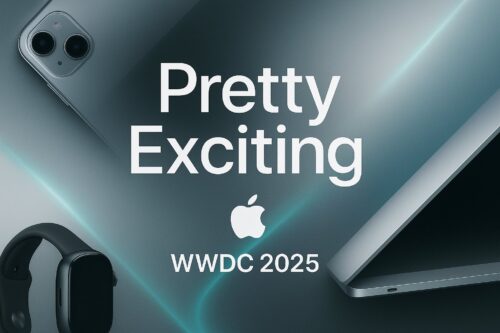What’s the Difference Between Office 365 and Microsoft 365?
Microsoft has, for a long time, dominated the cloud software market. For almost three decades, the technology corporation has been providing its users with great productivity tools, and today, it takes pride in serving over one billion active users. Managing data, communicating information, and creating documents have all been made possible through Microsoft’s eminent core apps like Word, Excess, Exchange, Outlook, Skype, among others.
These intelligent tools and services can be widely categorized as Office 365 and Microsoft 365, which differ accordingly. Confusing, right? Well, it won’t be after reading this resourceful article!
We’ve created this comprehensive piece to break down:
- What is Office 365?
- What is Microsoft 365?
- How is Office 365 different from Microsoft 365?
So let’s get the show on the road!
What is Office 365?
Office 365 is a cloud-based suite of productivity apps and services that Microsoft launched in 2001. One could argue that it’s a popular version of the original Microsoft Office as it mixes apps that you’re probably familiar with, like Microsoft Word and Excel, with more advanced and modern ones like Teams and Exchange.
In particular, Office 365 consists of core apps and services that emulate the traditional versions of Microsoft Office. These include:
- Word
- PowerPoint
- Excel
- OneNote
- Outlook
And since it’s a subscription-based solution, you can also purchase your preferred package to access more fantastic business tools such as:
- Skype for Business
- Microsoft Teams
- OneDrive
- Planner
- Yammer
- Exchange
- Publisher
- Access
- and many more
It’s critical to note that Office 365 comes in various plans when licensing, and there are different versions for businesses, individual use, multi-user households, non-profits, students, and learning institutions.
Also, there are online-and-mobile-only versions, better referred to as Office Online. These are feature-limited versions of Office 365 apps that users can access for free. However, if you’re looking for solutions to enhance productivity, security, collaboration, and communication, Office 365 offers monthly, per-user subscriptions with tons of top-rated cloud apps and services. Plus, there are different plans that you can choose from to match your business-specific needs.
What is Microsoft 365?
In a word, Microsoft 365 is an all-in-one bundle of three distinct services, including Office 365, Windows 10 Pro, and Enterprise Mobility + Security (EMS). Microsoft 365 was introduced in mid-2017 to give large, small, and mid-size businesses all the core tools they need to get things done more efficiently, bolster their security posture, and enhance their IT infrastructure.
Besides the Office 365 apps and services described above, Microsoft 365 gives users access to more innovative features such as:
- Data protection controls
- Calendaring
- Mobile device management
- Administration and deployment controls
- File storage
- Data and app security
- Cyber threat protection
- Identity management
- 99.9% uptime guarantee
Please note that like Office 365, Microsoft 365 comes in various plans that you can choose from, depending on your business-specific needs. Plus, the services included are available as separate licenses.
Did you know that Microsoft’s Office 365 has since changed to Microsoft 365 as of April 21, 2020? That’s right! And the rebranding is inspired by Microsoft’s need to position itself as an all-in-one complete productivity platform for its clientele. Luckily, that transition doesn’t affect users who had already subscribed to Office 365 – they’ll continue enjoying or accessing the usual apps and services until the current subscription runs out.
How is Office 365 Different From Microsoft 365?
The simplest way to describe the difference between the two cloud-based platforms is that Office 365 is part of Microsoft 365. In other words, Microsoft 365 consists of all the apps and services available in Office 365 suite as well as the most recent operating system and advanced security tools.
But that’s not detailed enough to help you get a clear picture of the two productivity tools and the benefits you would gain by upgrading to Microsoft 365. Don’t you agree? Hence, we’ve settled on two distinct plans to help you understand each product fully: Microsoft 365 Business and Office 365 Business Premium.
As we hinted earlier, Office 365 comes with a variety of plans, including Business Premium. It is a go-to option for businesses with a maximum of 300 users, and it offers the entire Office suite plus business-class email. For businesses with over 300 users, we recommend going for the Enterprise plan.
Microsoft 365 has two primary plans; Microsoft 365 Business and Microsoft 365 Enterprise. The latter includes all the latest Office and a complete suite of cloud-based services, including email, file storage, meetings, collaboration, and more. Additionally, it comes with unique features such as legal hold and PSTN conferencing. Essentially, Microsoft 365 for Business is suitable for a max of 300 users for proper optimization.
Both Office 365 Business Premium and Microsoft 365 Business package enable users to install Office applications on endpoint devices like smartphones, tablets, and PCs. They also come packed with the following features:
- 1TB of storage space for storing personal files,
- Business-class email
- Calendars
- Skype for Business for video calling and instant messaging
- Microsoft Teams
- Additional new apps like Bookings, Invoicing, Planner, MilelQ, Listings, Delve, and more
OK, enough for the similarities. The big question is, what’s included in Microsoft 365 and is missing in Office 365? For starters, Microsoft 365 provides better device management capabilities than Office 365 as it comes with one console for managing both devices and users. Also, you can automatically distribute Office apps to Windows 10 PCs.
The other difference is that whereas Office 365 lacks security tools, Microsoft 365 can efficiently protect data across multiple devices as well as secure access. Windows Defender is also available to protect Windows 10 devices from cybersecurity threats like malware and phishing. The last big difference, of course, is that the Office 365 plan lacks the operating system.
Have You Deployed Microsoft 365 Yet?
Microsoft 365 is, by far, a more beneficial option because it comes with everything available in Office 365 – and more. With this bundled package, you’ll forget about the need to upgrade your operating system to Windows 10, and neither will you worry about data security or GDPR compliance.
So what are you waiting for? Engage with Mainstreet IT Solutions at 717-354-8385 for more information on Microsoft 365 deployment plus other business IT needs. Or you can simply schedule an immediate FREE consultation with our team!




